Most people don’t realize that Rapamune can dance with hundreds of other medicines, a couple of foods, and even your favorite glass of wine. One small misstep can turn a lifesaving transplant drug into a source of nasty side effects.
Good news: you don’t have to become a chemistry professor to keep your Rapamune regimen safe. In the next few minutes, we’ll walk through the biggest interaction risks, show you quick‑check tools, and share real‑world tips that make managing Rapamune feel as easy as setting an alarm.
Why Interactions Matter
Rapamune (generic name sirolimus) is an mTOR‑inhibitor that keeps your immune system from rejecting a transplanted organ. That’s a huge benefit, but it also means the drug walks a thin line—too much can suppress immunity, too little can let rejection sneak back in. Every other pill, supplement, or even a sip of alcohol can tilt that balance. Understanding the “why” helps you speak the language of your doctor instead of feeling like you’re guessing.
Expert insight: Dr. Maya Patel, a board‑certified transplant nephrologist, says, “Every new medication a patient adds is a potential catalyst for a dangerous change in sirolimus levels. Proactive checks are the cornerstone of long‑term graft survival.”
Quick Overview
| Interaction Type | # Known | Major / Moderate | Typical Examples | What to Do |
|---|---|---|---|---|
| Prescription Drugs | 708 (per Drugs.com) | 182 major, 515 moderate | Acyclovir, atorvastatin, diltiazem | Use the Drug Interaction Checker, adjust dose, monitor levels |
| Alcohol / Food | 2 | – | Alcohol, grapefruit juice | Limit alcohol, avoid grapefruit |
| Supplements | – | – | Fish oil, CoQ10, St. John’s Wort | Check CYP/P‑gp effects, discuss with pharmacist |
| Disease Interactions | 9 | – | Renal disease, liver disease | Dose adjustment, closer lab monitoring |
Prescription Drugs
Major Interactions – The Red Alerts
When a drug falls into the “major” bucket, it can push sirolimus levels up to dangerous heights. Think of it like adding too much salt to a soup—everything becomes overwhelming.
- Ketoconazole, itraconazole, other azole antifungals: Block the CYP3A4 enzyme that clears Rapamune, potentially tripling blood levels.
- Diltiazem, verapamil: Calcium‑channel blockers that also slow CYP3A4, leading to higher sirolimus concentrations and an increased chance of infection or wound‑healing problems.
- Erythromycin, clarithromycin: Macrolide antibiotics that sit on the same metabolic pathway, again raising drug levels.
In practice, clinicians often cut the Rapamune dose by 25‑50 % when starting any of these medicines, then re‑check trough levels within a week or two. Skipping this step can leave you vulnerable to side effects like mouth ulcers, high cholesterol, or even a rare lung infection.
Moderate Interactions – The Yellow Alerts
These drugs don’t usually cause toxicity, but they can lower sirolimus levels, making the transplant drug less effective. Imagine turning down the volume on a speaker—you might still hear the music, but it’s not strong enough to fill the room.
- Rifampin, rifabutin: Powerful CYP3A4 inducers that speed sirolimus clearance, potentially dropping levels by half.
- Phenytoin, carbamazepine: Anti‑seizure meds that also crank up the enzyme, risking graft rejection.
- St. John’s Wort: A “natural” supplement that’s a notorious CYP3A4 inducer; keep it off the list.
When one of these shows up, doctors may increase the Rapamune dose or simply warn you to watch for signs of rejection—fever, swelling, or a sudden change in kidney function.
Everyday Favorites – Aspirin & NSAIDs
Aspirin isn’t a red‑alert drug for sirolimus, but it can still cause moderate interaction, mainly increasing the risk of GI bleeding. If you need pain relief, a low‑dose aspirin is usually okay, just keep an eye on any stomach discomfort.
Alcohol & Food
Alcohol – One More Reason to Sip Slowly
Alcohol itself isn’t listed as a massive hazard, but heavy drinking can worsen liver stress—a crucial organ for drug metabolism. Think of the liver as a busy airport; too many flights (alcohol) can delay the takeoff of Rapamune, causing “traffic jams” in the bloodstream.
Guideline: Keep alcohol to ≤ 2 standard drinks per day, and separate it from your Rapamune dose by at least two hours. That simple timing trick can make a noticeable difference.
Grapefruit – The Unexpected Saboteur
Grapefruit juice is a classic CYP3A4 blocker. A single glass can raise sirolimus levels enough to tip you from “controlled” to “danger zone.” If you love a morning grapefruit, consider swapping it for orange or a low‑acid fruit instead.
Supplements & Over‑the‑Counter (OTC) Products
What’s Safe, What’s Not?
| Supplement | Interaction Mechanism | Effect on Rapamune | Recommendation |
|---|---|---|---|
| Fish Oil (Ω‑3) | May mildly inhibit CYP3A4 | Small rise in sirolimus; possible increased bleeding risk | Use only if your doctor says okay |
| CoQ10 | Shares CYP3A4 pathway | Potential modest increase in levels | Monitor troughs if you start it |
| St. John’s Wort | Strong CYP3A4 inducer | Significant drop in Rapamune → risk of rejection | Avoid completely |
| Vitamin C / D | No known CYP impact | Neutral | Safe – keep usual dosage |
When in doubt, treat every supplement like a prescription. Write down what you’re taking and run it through the Drug Interaction Checker—it’s free, fast, and surprisingly reassuring.
Managing Interactions in Real Life
Talk to Your Team
Imagine you’re planning a road trip. You wouldn’t head out without a map, right? Your medication list is that map. Keep a printed or digital copy that includes:
- All prescription drugs (including dosage).
- OTC meds and supplements.
- Typical alcohol intake.
- Any recent changes (new antibiotics, flu shots, etc.).
Bring this list to every appointment, and ask for a baseline sirolimus trough level before adding anything new. That number becomes your reference point, like the odometer on your car.
Adjusting the Dose
When a major inhibitor joins the party, doctors usually cut the Rapamune dose by a quarter to a half. When an inducer shows up, they might add a similar increment. The key is monitoring—weekly blood draws for the first few weeks, then spacing out as the picture clears.
Lifestyle Tips to Keep Things Smooth
- Hydration: Plenty of water helps kidneys flush out excess metabolites.
- Diet: Stick to low‑fat, low‑sugar meals; high‑fat foods can affect drug absorption.
- Symptom journal: Note any new rash, fever, bruising, or changes in urine output. It’s the fastest way to spot an issue.
- Consistent timing: Take Rapamune at the same time each day—preferably with a light snack, not a big meal.
Story From the Front Lines
John, 42, a kidney‑transplant recipient, once called his pharmacist after a sudden sinus infection required erythromycin. “I felt terrible, but I didn’t know the antibiotic would mess with my transplant meds.” The pharmacist ran a quick check, flagged the interaction as major, and advised his doctor to halve his Rapamune dose. Within ten days, John’s blood level was back in the safe zone, and the infection cleared. “That call saved my graft,” he says, and I believe him.
Bottom Line – Your Action Plan
Rapamune drug interactions are common, but they’re not a mystery you have to solve alone. Here’s a three‑step plan you can start today:
- List everything. Write down every pill, herb, vitamin, and your typical alcohol consumption.
- Check it. Use the free Drug Interaction Checker whenever you add something new.
- Talk and test. Share the list with your transplant team, get a baseline sirolimus level, and follow-up labs after any change.
Staying proactive doesn’t just protect your kidneys or lungs—it keeps you feeling confident, in control, and ready to enjoy life’s everyday moments. Got a question about a specific supplement or a new prescription? Drop a comment below or reach out to your pharmacist. You’re not alone on this journey, and together we can keep your Rapamune working exactly the way it’s meant to—quietly safeguarding your health.


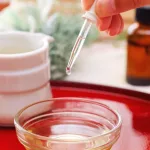

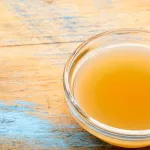


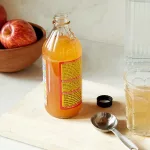





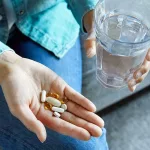



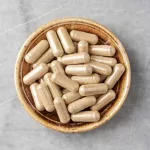
Leave a Reply
You must be logged in to post a comment.